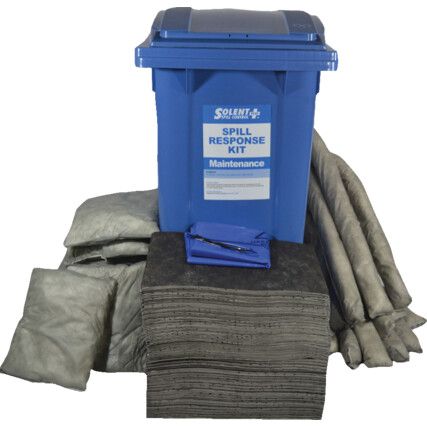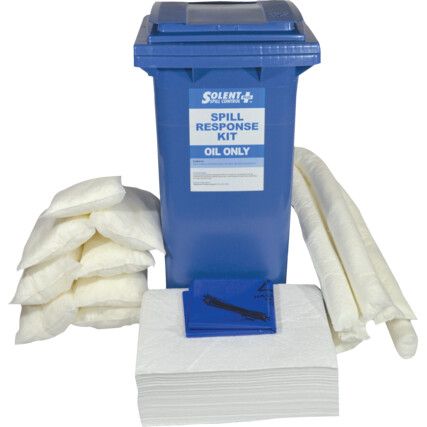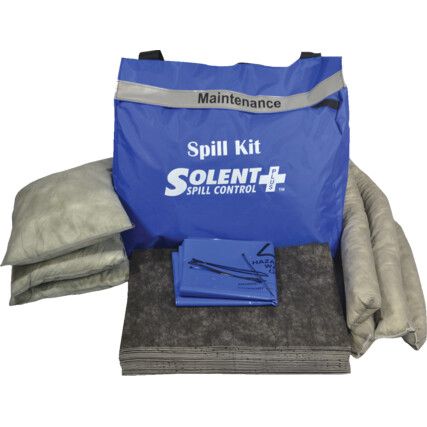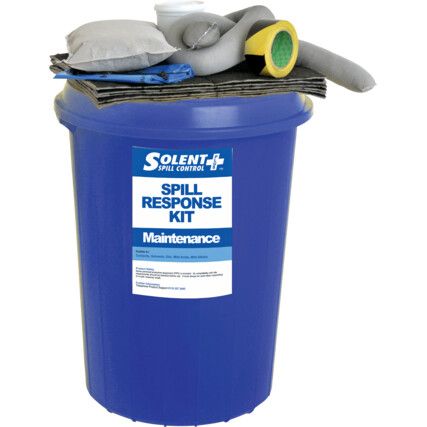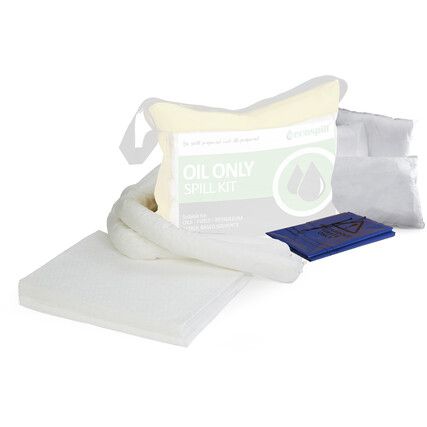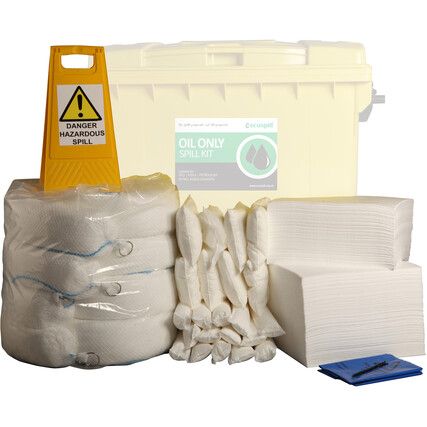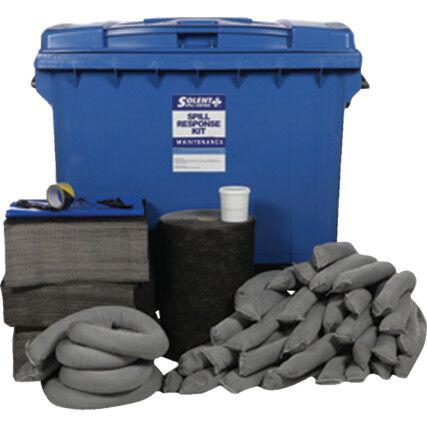Spill Kit Refill
Shop for spill kit refills of all types and sizes, to replenish your depleted spill kits online now at Cromwell. We stock a comprehensive selection of spill kit refills to keep you prepared. Choose from market-leading brands Ecospill® and our exclusive brand, Solent Spill Control®. For further information on Spill Control products, find more in our Spill Control Expert Guide.
What are spill kit refills?
Spill kit refills are replenishment packages containing replacement or additional absorbent materials, personal protective equipment (PPE), and other supplies needed to restock and maintain spill kits after they have been used or depleted.
Why buy spill kit refills?
These refills ensure that spill kits remain fully stocked and ready for prompt response to future spills and emergencies.
When are spill kit refills used?
In the event of a spillage of hazardous liquids, spill kits or various absorbents may be used to clean up or contain a spill. In such instances, spill kits will need to be restocked and replenished to protect against future spills.
Spill kit refill types
There are three general types of spill control product. This is the same for spill kit refills. They are chemical-only spill kit refills, oil-only spill kit refills and maintenance spill kit refills to cover everything else. They all contain, depending on their size, a series of absorbents designed for optimum absorption and control of hazardous spills. These are sold separately as refills, and are what we will focus on here...
• Absorbent booms - These larger absorbents are suitable for use on both land and water and are used to surround and contain a spill to prevent it from spreading or running downhill into waterways. They are designed with high tensile strength and can often be linked together to tackle larger spillages.
• Absorbent granules - There are different varieties of granules for indoor use and outdoor use and they're a quick and lightweight solution to smaller spillages. General-purpose types tend to be made from sawdust, while clay is used for outdoor granules. Indoor granules are usually made from recycled absorbent materials that won't stain floors and walls.
• Absorbent pads - There are three types of pads: chemical only, oil only and maintenance pads. They're layered onto a spillage to absorb and hold the liquid in an absorbent core, so when they're collected for disposal, no liquid will seep out.
• Absorbent pillows - Available for all classifications of spill, absorbent pillows are securely stitched around the edges and contain a large amount of highly absorbent material. They're ideal for use when a spill has pooled in a hard-to-reach area as they are malleable enough to push between machinery and bars.
• Absorbent rolls - This type of absorbent is identical to absorbent pads, except that it comes on a roll for dispensing the exact amount required.
• Absorbent sheets - Lightweight and ideal for smaller spillages, oil-only absorbent sheets are often used to absorb spillages in rivers and oceans, as their hydrophobic characteristics repel water, but absorb oils.
• Absorbent socks - Similar in appearance to absorbent booms, socks are smaller and often used to surround leaking machinery.
Considerations when choosing spill kits
• Compatibility - Ensure that the refill components are compatible with the spill kit they are intended to replenish. Check the specifications and dimensions of the refill components to ensure they fit properly in the spill kit container and are compatible with the absorbent materials and PPE already included in the kit.
• Absorbency capacity - Select refill components with a sufficient absorbency capacity to handle the types and volumes of liquids you expect to encounter in spill situations. Choose absorbent materials that are appropriate for the types of liquids commonly found in your facility, such as oils, chemicals, or water-based fluids.
• Quantity and Size - Determine the quantity and size of refill components needed to adequately restock the spill kit based on the spill response requirements of your facility. Consider factors such as the size of the spill kit, the frequency of spill occurrences, and the potential spill volumes.
• Regulatory compliance - Ensure that the refill components comply with relevant regulations and industry standards for spill response equipment and materials. Look for refill products that meet British Standards (BS) and other applicable standards for absorbent materials, PPE, and containment barriers.
Spill kit refill jargon buster
It's important that you follow the legal guidelines for disposing of hazardous waste. To support you with this, we've given some handy information below...
What are the absorbed liquid destruction regulations?
Every new spill kit refill is supplied with a disposal bag and ties to ensure secure closure. The bag will be marked as hazardous waste and should be disposed of in line with local council hazardous waste regulations. Check online at https://www.gov.uk/find-local-council to find your local council and find out more about your environmental duty of care at https://www.gov.uk/dispose-hazardous-waste.
FAQs
What should a spill kit refill contain?
Most spill kit refills will be supplied in a storage container, including a holdall bag or a bin depending on the size. There will be a number of absorbent products that will cover the spill amount in litres and a labelled disposal bag and ties in which to place used absorbents.
Depending on the size and type of the spill kit refill, PPE should be included, ranging from protective gloves to goggles and a coverall (these must also be disposed of after use).
What should I do if a spill occurs in my facility?
• First things first: protect yourself by donning the correct PPE equipment.
• Locate the source of the spill and stop it (you may need to add absorbent socks or pillows underneath and around the source, depending on how the spill occurred).
• Next bring the correct spill kit to the location, and, if it's large and spreading, contain it with absorbent booms.
• Add some signage to the area to keep employees away from the hazard.
• Add the next absorbents to the spill to soak it up. You may need to repeat this step with fresh absorbents to ensure the entire spill is cleaned.
• Load the used absorbents into the disposal bag and secure it with the ties provided.
• Check the area to make sure all the spillage has been cleaned up.
• Log the incident in accordance with your company's policies.
